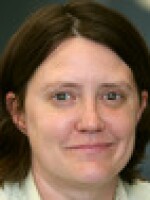From Texas Standard:
Big news this morning from NASA’s planet-hunting mission: The Kepler Space Telescope at the University of Texas' McDonald Observatory has revealed the most Earthlike planet found to date, researchers say. The planet, called Kepler-452b, lies in the constellation Cygnus, about 1,400 light years from Earth. It qualifies as super-Earth-sized, as it's about 1.6 times larger than Earth, and its orbital period is quite similar to ours, at 385 days.
The Kepler scope was launched in 2009 to detect Earth-size planets in or near the habitable zones of distant stars — planets that have the potential to sustain life like that on Earth.
“We are pushing toward Earth 2.0,” McDonald Observatory astronomer Michael Endl said in a press release. “This planet is probably the most similar to Earth yet found.”
Endl spoke with the Texas Standard about the mission.
On what’s so special about Kepler 452B:
“[Kepler 452B] is one of the most Earth-like planets ever discovered. It’s important because these planets are still very rare. We still don’t know how frequently Earth-like planets are in the galaxy. And that of course determines whether we are optimistic that there is extraterrestrial life out there or not. That was the prime science goal of the Kepler mission to determine exactly how frequent those Earth-size planets are.”
On Kepler 452B’s similarities with Earth:
“Kepler 452B is about 1.6 times the size of Earth. It’s almost in identical orbit to our Earth. That’s very important because there is only a certain distance that you can be from your star where the temperatures are just right to have a habitable world. That’s why we call it the habitable zone… Currently this planet is right at the edge of our most conservative estimates of the habitable zone… [Kepler 452B] is basically where everything matches. Not only is the planet as close as possible to the Earth but also the sun. The star is very closely resembling our sun by probably a few billion years old…maybe a couple of billion years old.”
On how rare potentially habitable planets are:
“There have been many, many small planets found by Kepler [Space Telescope] but there are hundreds of them, but they are very close to their star. Very hot, very short orbital periods…just a few days maybe a few months. But this is the longest orbital period of the small Kepler planets, and it’s the one that’s almost our 365 days. [It’s] 385 days.”
On if there is life on Kepler 452B:
“We cannot measure that at the moment. We have no indication whatsoever whether this planet has life on it or not. We only see the most basic properties of the system. We see the size of the planet and its orbital radius. We can study the parent star in high detail but currently we don’t have the ability to, for instance, probe the atmosphere of this planet or even measure its mass.”
On the future of space exploration:
“The next 10 to 20 years we’ll see an incredible revolution in our knowledge about planets like this… Kepler is giving us the first estimate [at] how rare or how common [habitable] planets are in our galaxy. So this was the first step. It’s a revolutionary first step. It’s a historic measurement really. We have been involved in Kepler since the very beginning…been doing this for several years now. This is probably one of the most interesting planet detections that came out of what we’re involved in.”
On a scale of 1 to 10 how exciting this discovery is:
“10 would be really the compelling evidence of a planet with life…then this is maybe an 8… I think it looks very promising that these planets exist almost everywhere. If you have a star, you have planets and these small planets are more numerous than the big giant planets. We know this now. So there will be an incredible number of potential habitats and habitable planets in the galaxy. It’s just a matter when we will stumble across the first one.”





